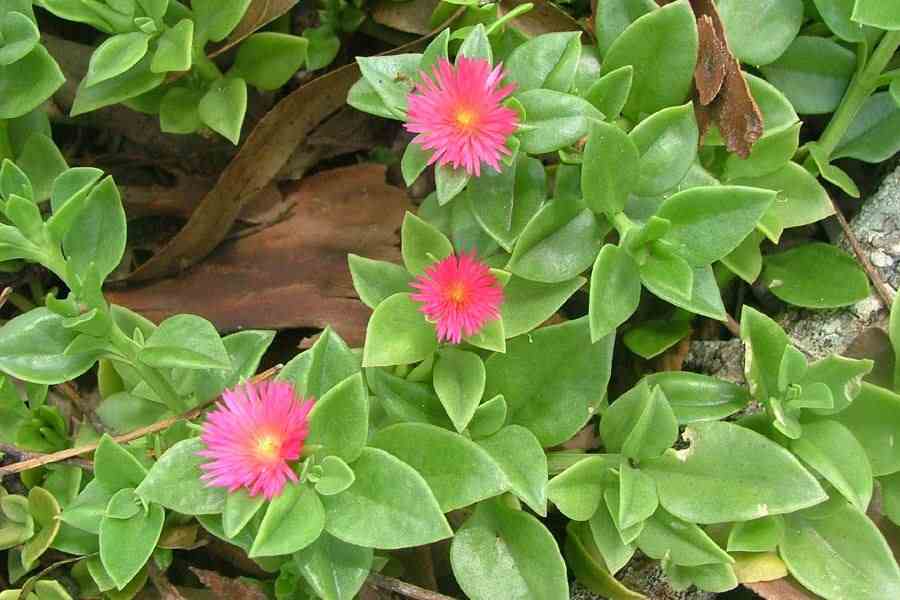Aptenia Cordifolia flowers of this plant are small to medium in size, shiny and purple to red. And on little flower stalks, it grows in the form of clusters. Aptenia Cordifolia is one of the self-fertilized flowers. and grows in spring till autumn. These flowers open in the morning and afternoon time. And are approximately 15 mm wide.
Origin:This plant is first seen in South Africa and Swaziland.
Naturalized:
IN few regions where Aptenia Cordifolia is also grow.
- Central Queensland
- Victoria
- South Australia
- Western Australia
- Tasmania
- New South Wales
- Europe
- Newazlans
Scientific Name: Aptenia cordifolia (L. f.) is the scientific name for baby sunrise.
Common Names: Various common names are there for Aptenia Cordifolia:
- Ice plant
- Baby sun rose
- Ice plant
- Dew plant
Family: Aizoaceae is its belonging family.
Genus: Aptenia
Maintenance: These flower doesn’t need extraordinary maintenance.
Pest and disease: Interestingly these flowers are disease and pest free.
Requirements To grow these flowers: The baby sun rises needs food drainage soil and full sunlight. Because both things are essential for the survival of these flowers. Regular watering is crucial when the soil gets dry.
Medical uses of Aptenia Cordifolia:
There are various medical uses of these flowers such as
- It is used as an anti-inflammatory.
- Baby sunrise is widely used as a deodorant.
- It’s also used as a mild enema for babies.
- And its black powder is utilized for vaccination.
Frequently Asked Question:
Are Baby sunrises are edible?
These are succulent flowers and are members of the ice plant family. It is completely edible. Because it doesn’t provide any harm to living organisms.
Do the ice plant needs fertilizer?
For the proper growth of these flowers. It is essential to provide it with good fertilizer in spring and at the end of the summer.
Does Cordifolia bloom throughout the year?
No these flowers bloom fully in the whole summer and remains evergreen.

